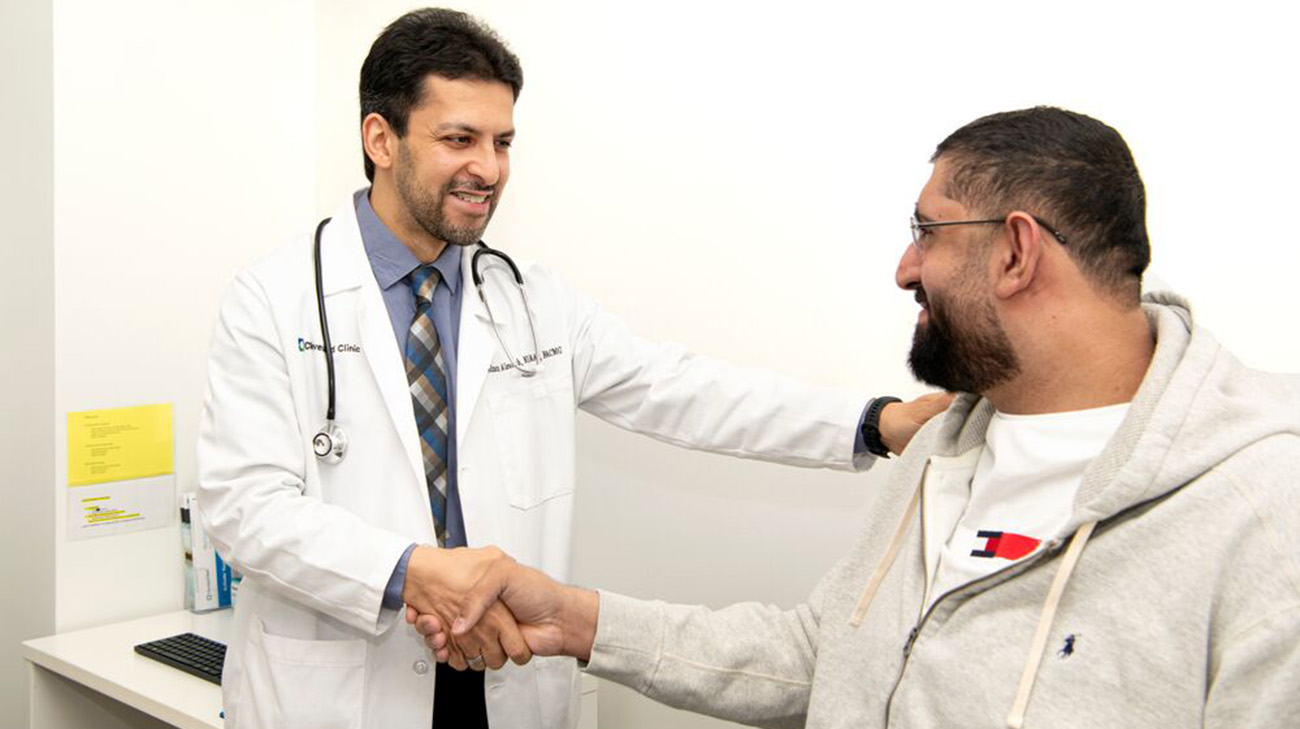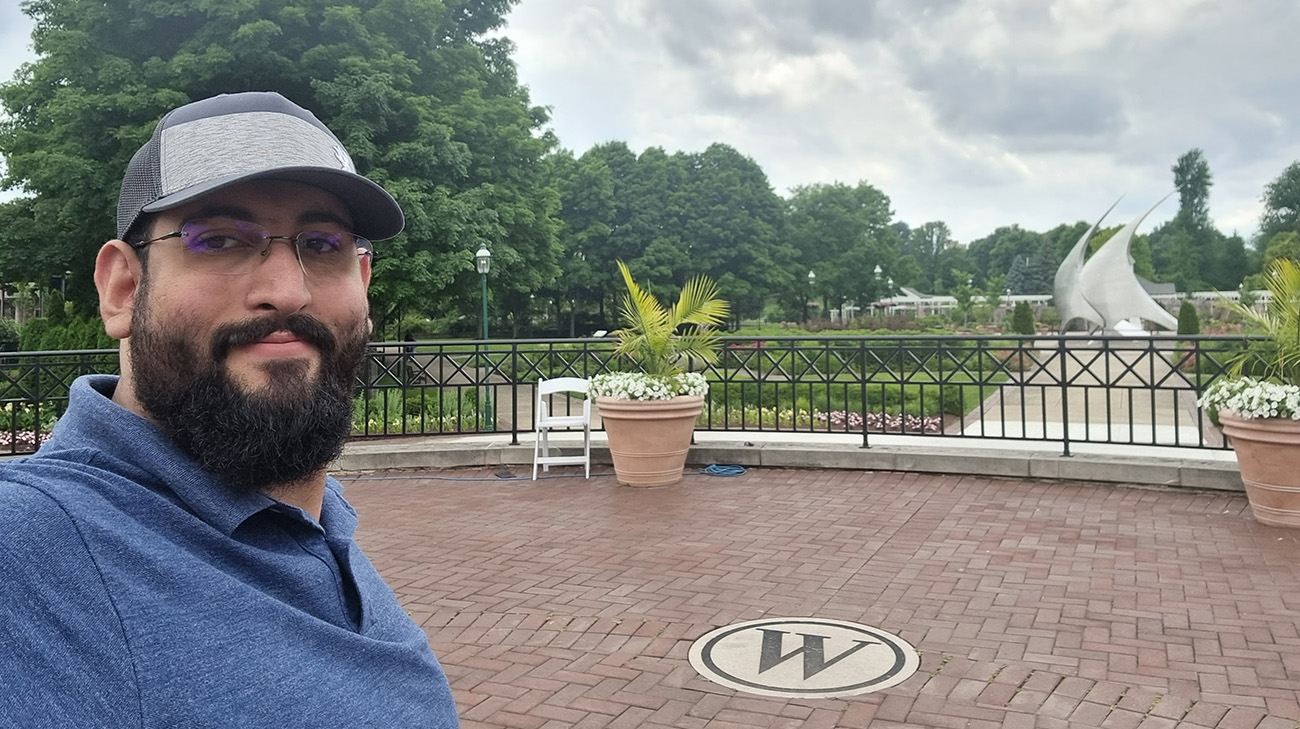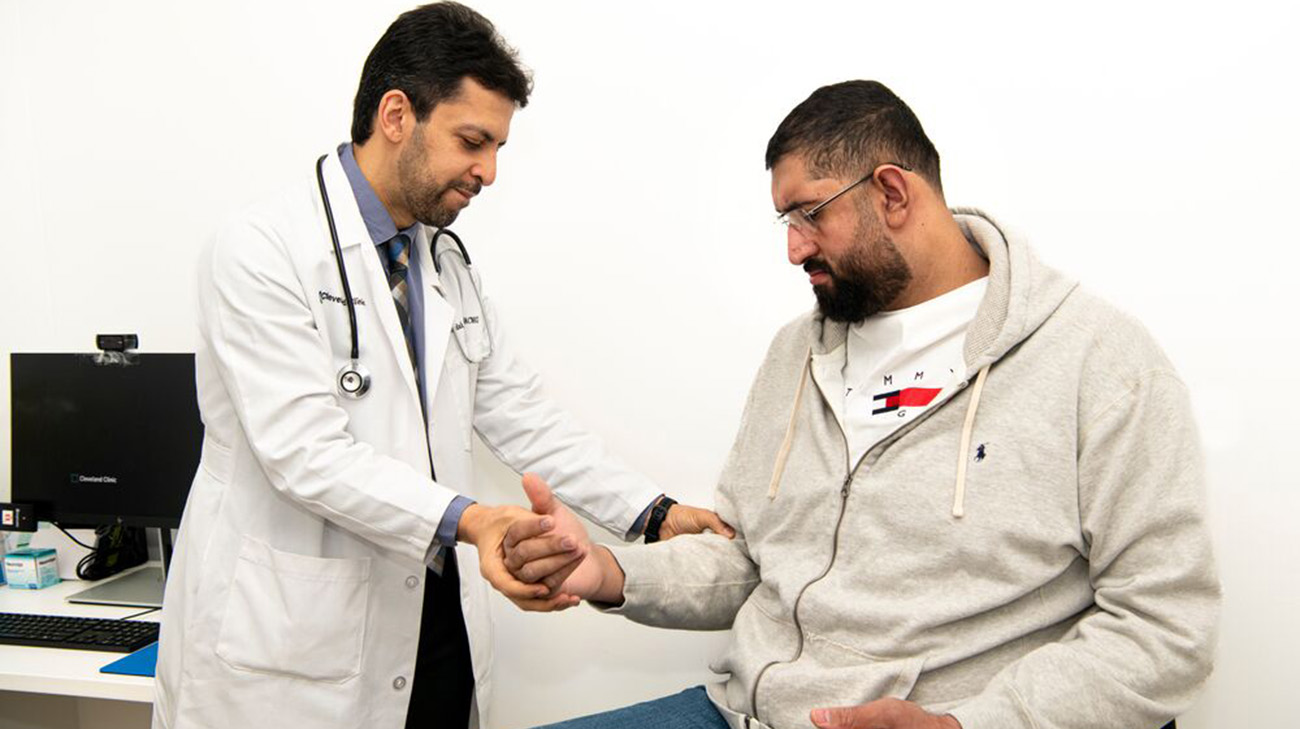
After turning 18, Mahdi Altaho noticed he was growing unusually tall and experiencing pain in his bones, particularly in his back, lower abdomen, and feet.
Typically, boys undergo a peak growth spurt between the ages of 11 and 16, but Mahdi sensed that his situation was different.
“I kept growing taller and I was in pain. I also had a condition called ‘flat feet’ that caused me significant suffering. I started researching treatment options,” explains Mahdi.
Flat feet occur when there is little-to-no arch in the sole of the foot, which can lead to pain and difficulties with walking.
After seeking advice from local physicians in Kuwait, his country of citizenship, Mahdi applied for a state-sponsored program that sends citizens abroad for specialized treatment of complex medical conditions. In 2018, he traveled to Europe for foot surgery. After a few months, Mahdi returned to Kuwait in a wheelchair as he was still working to regain his mobility.
“In October of that year, I woke up unable to move my left foot; it was numb,” says Mahdi. “I also began experiencing vision problems and weakness in my hands.”
After consultations, Mahdi was diagnosed with type 2 diabetes. With medical treatment, Mahdi’s vision improved but the numbness in his left foot still needed to be addressed.
At the end of 2019, with the help of the state-sponsored program, Mahdi traveled to Cleveland Clinic in Cleveland, Ohio, in the United States. There, he consulted with specialists in neurology and orthopedics. He also met with an endocrinologist who recommended genetic testing.

Mahdi in 2022, during his second stage of treatment. (Courtesy: Mahdi Altaho)
Mahdi went back to Kuwait in early 2020 to re-apply for the state-sponsored program so he could see a genetic specialist. His application was delayed due to the COVID-19 pandemic, but he was then able to schedule his medical appointments with assistance from Cleveland Clinic’s Global Patient Services.
Adnan Alsadah, MD, a clinical geneticist and director of Cleveland Clinic’s Undiagnosed Disease Clinic, says, “When I first saw Mahdi in November 2021, he was experiencing uncontrolled bone growth, pain, and muscle weakness. He also had elevated hormones, particularly testosterone.”
Dr. Alsadah conducted whole genome sequencing coupled with RNA sequencing and identified two rare genetic conditions. The first is aromatase deficiency, which causes uncontrolled bone growth due to a lack of estrogen production. This leads to continued growth after puberty, resulting in height exceeding a person’s genetic potential. The second condition is limb-girdle muscular dystrophy, caused by the CAPN3 gene and resulting in muscle weakness.
“Nearly a decade after Mahdi’s initial symptoms appeared, genetic testing finally provided a diagnosis. With that information, we could prescribe the appropriate treatment,” says Dr. Alsadah, who referred Mahdi to a Cleveland Clinic endocrinologist.
“A hormonal treatment of estradiol was prescribed to regulate hormones and halt the uncontrolled bone growth, so Mahdi does not grow any taller. Physical therapy and rehabilitation were recommended to help improve muscle weakness,” says Dr. Alsadah.

Mahdi during a follow-up appointment at Cleveland Clinic with Dr. Alsadah. (Courtesy: Cleveland Clinic)
Mahdi noticed improvement, and his lab results normalized. He returned to Kuwait a year later, at the end of 2022, and scheduled follow-up appointments with an endocrinologist and Dr. Alsadah in 2024.
“I am sharing my story to raise awareness about genetic testing so that rare conditions can be identified and treated sooner rather than later. I still face health challenges, but my lab results have been improving and my bones have stopped growing,” says Mahdi, who turned 27 in 2024. “I feel better physically and emotionally. I spent a long time searching for answers, wondering why I was growing so tall and experiencing so much pain.”
Dr. Alsadah explains, “The numbness in Mahdi’s left foot may arise from several factors, including diabetes and scoliosis. Diabetes could have made Mahdi more vulnerable to pressure on the spinal nerves due to scoliosis, which may have affected the nerves in his left foot. Uncontrolled and extensive bone growth likely contributed to his flat feet.”
“Patients often come to see me with complex, undiagnosed conditions,” says Dr. Alsadah. “Thanks to genetic testing – such as whole genome and RNA sequencing - we can now identify rare conditions. The earlier a condition is diagnosed and treated, the better the outcome.”
Related Institutes: Digestive Disease & Surgery Institute , Endocrinology & Metabolism InstitutePatient Stories
Perseverance and Focus Help Ovarian Cancer Survivor Beat the Odds HIPEC During Surgery Helps Keep Disease Under Control
Dec 10, 2025
Boy With Advanced Liver Cancer Thriving After Lifesaving Living Organ Donation From Aunt
Dec 8, 2025
Against All Odds A Journey of Recovery After Stroke
Dec 5, 2025
“Dr. Pervez is absolutely incredible, I can’t say enough about him and the speech therapy department. And Cleveland Clinic is phenomenal. They’ve always been wonderful, and I recommend them to everyone I talk to.”


